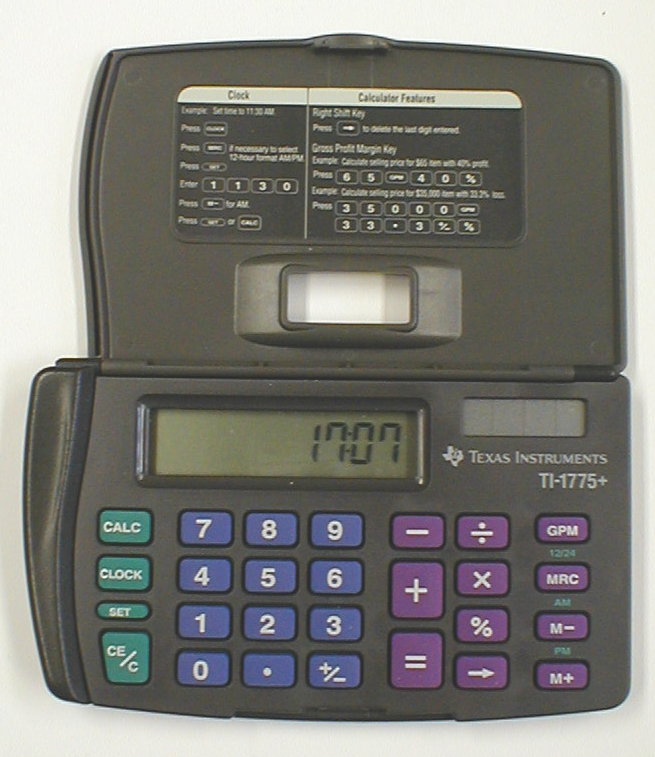

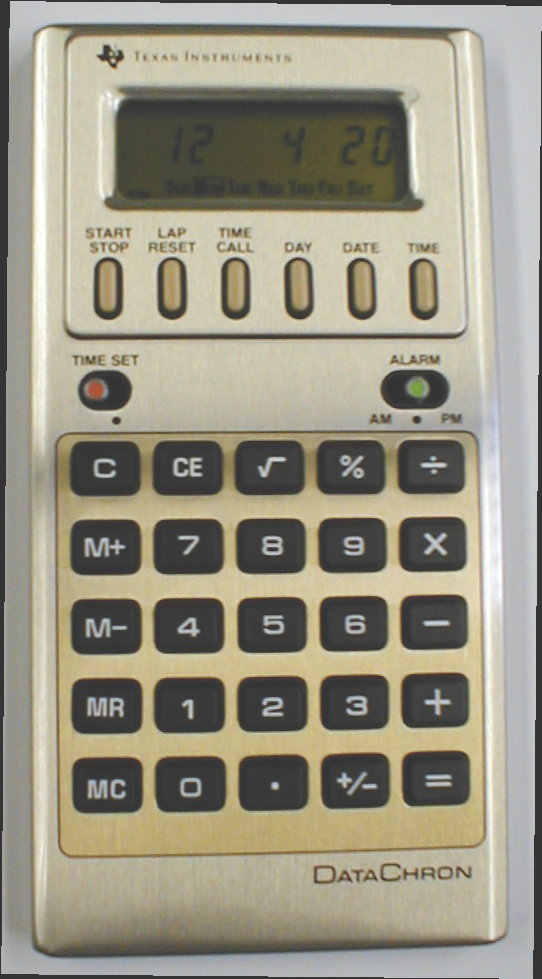
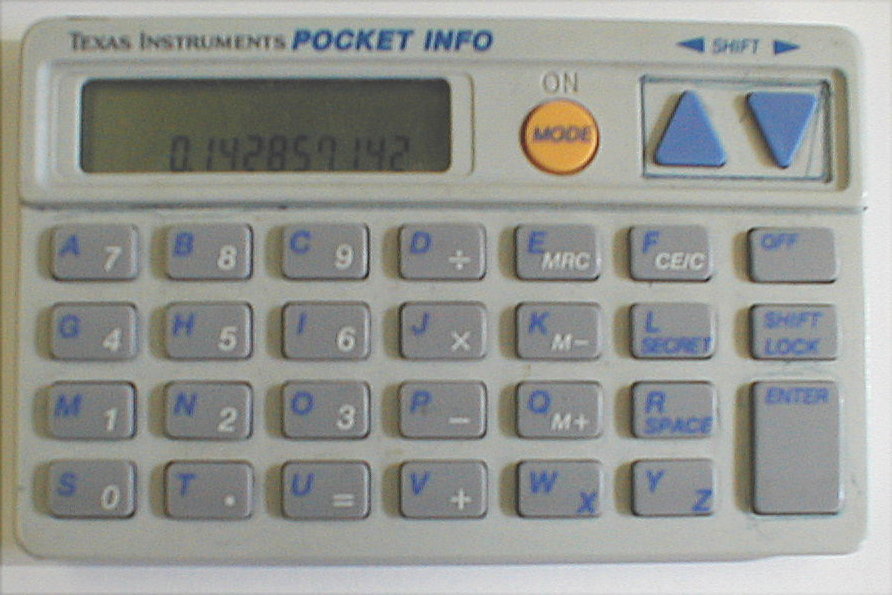
TI DataChron: A five-function calculator with memory that also
functions as an alarm clock, stopwatch, and calendar.
TI Pocket Info: A calculator that also stores phone numbers and has a
built-in clock.


1. TI-1775+: A successor to the DataChron, this clock/calculator can also
compute gross profit margins.
2. TI Europa: The Europa is a full-function desktop organizer,
including a four-function calculator, clock, calendar, and address book.
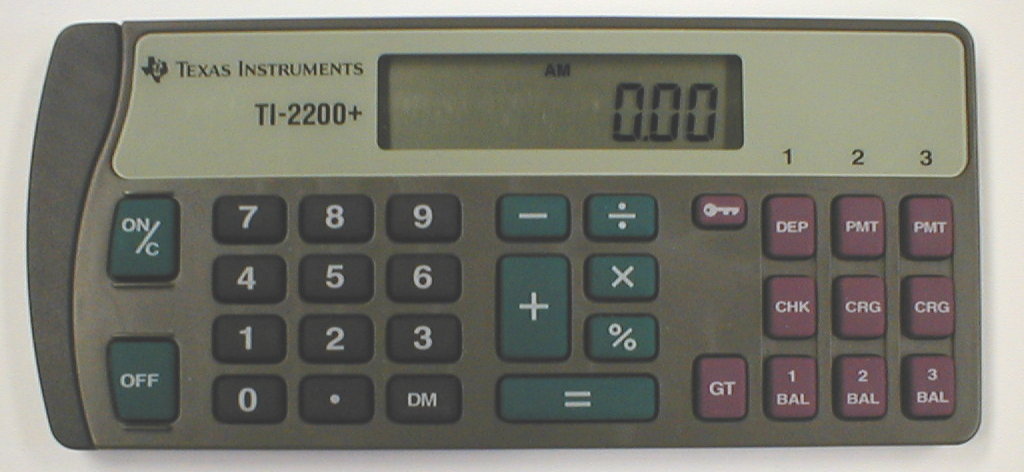
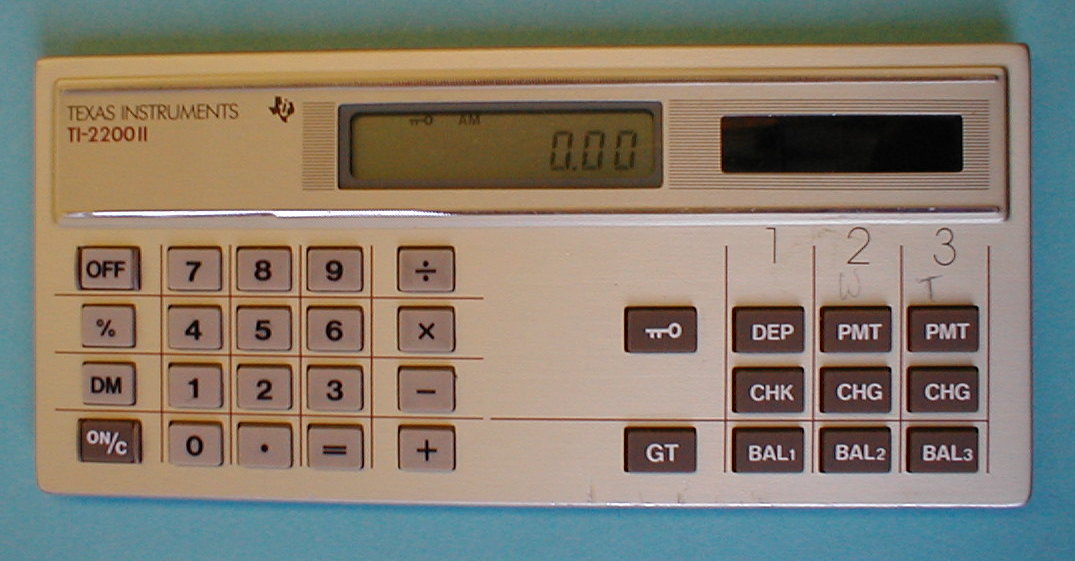
TI-2200+, TI-2200II: These examples of TI's line of checkbook calculators are designed to fit inside a checkbook and can track up to three accounts.
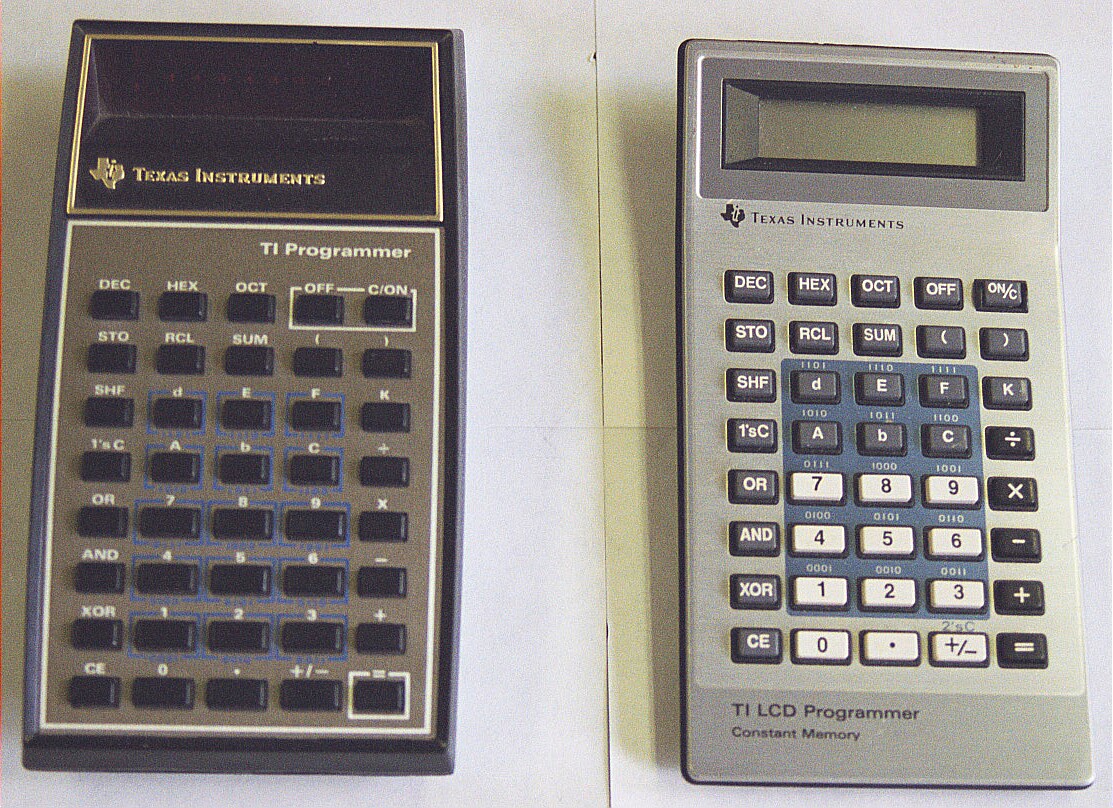
A couple of computer science calculators:
1. TI Programmer: Great for octal, decimal, and hexadecimal
arithmetic.
2. TI LCD Programmer: Same ideas, just a different display.

Goulds Pumpulator: A TI Business Analyst I, modified for the specific needs of this company. (I'm still trying to figure this one out.)
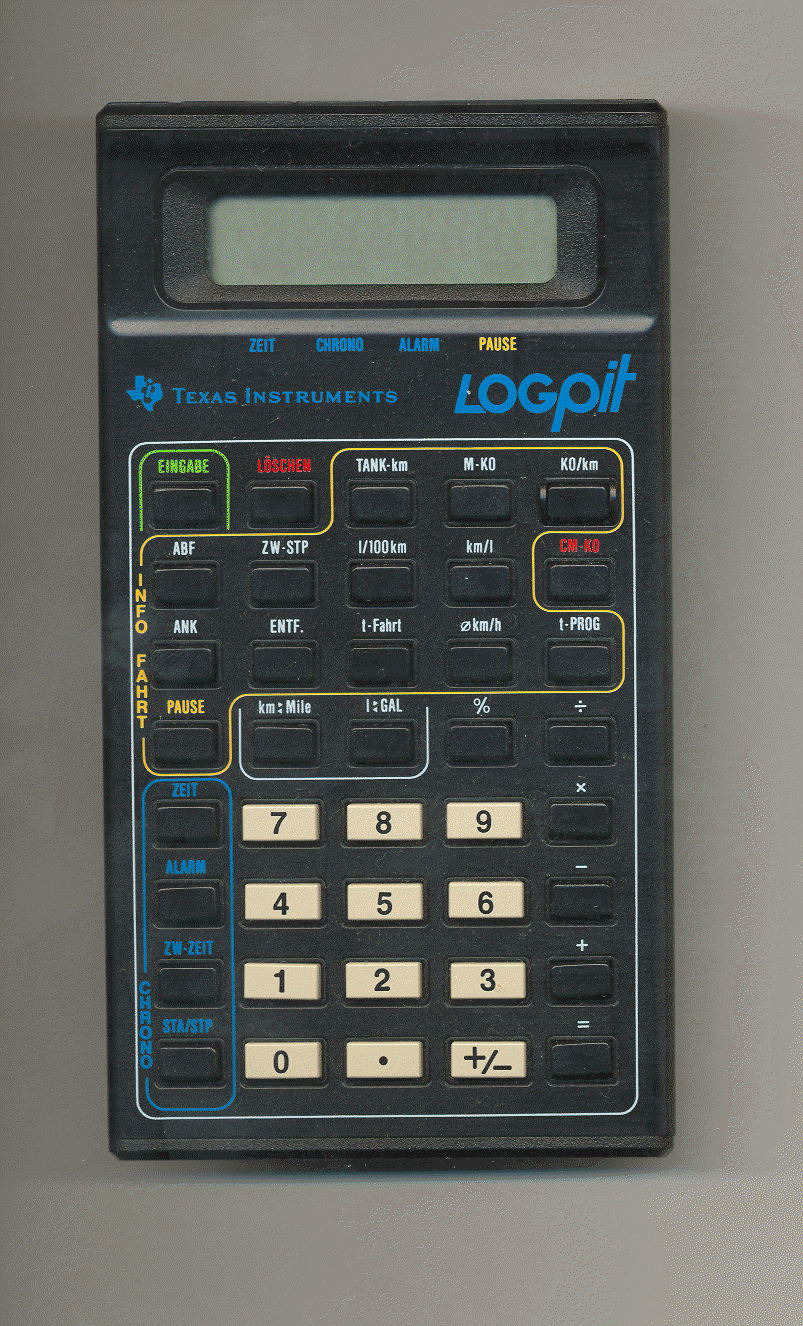
Texas Instruments LogPit: This calculator was sold in Europe (note the German legends on some of the keys) and carries out common driving calculations.
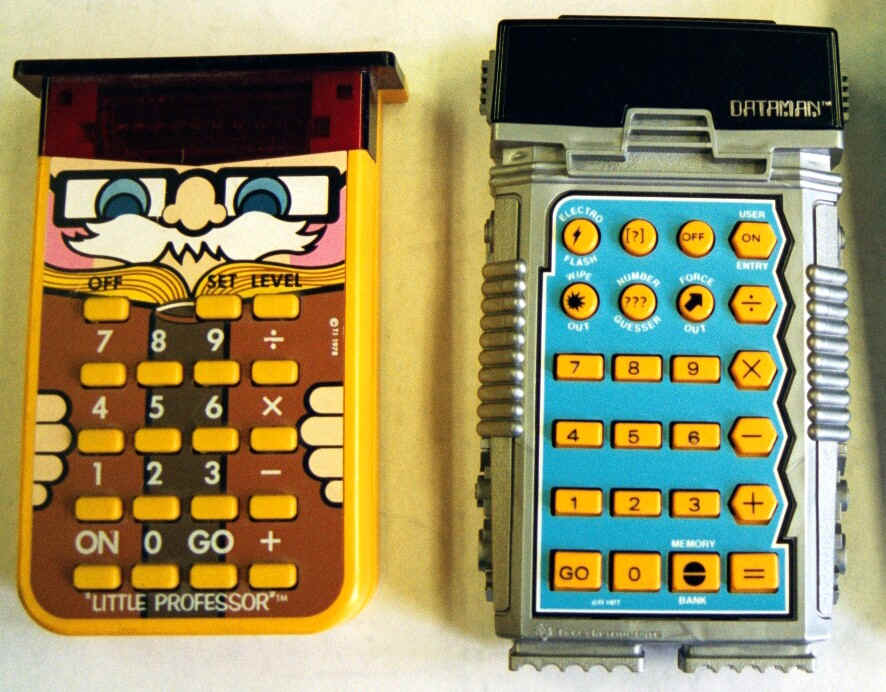
Some educational calculator/games:
1. TI Little Professor--LED version: A math tutor from the
mid-01970's. This one is instantly recognized as an old favorite by many
visitors to my office.
2. TI Dataman: Slightly later math tutor/video game machine.
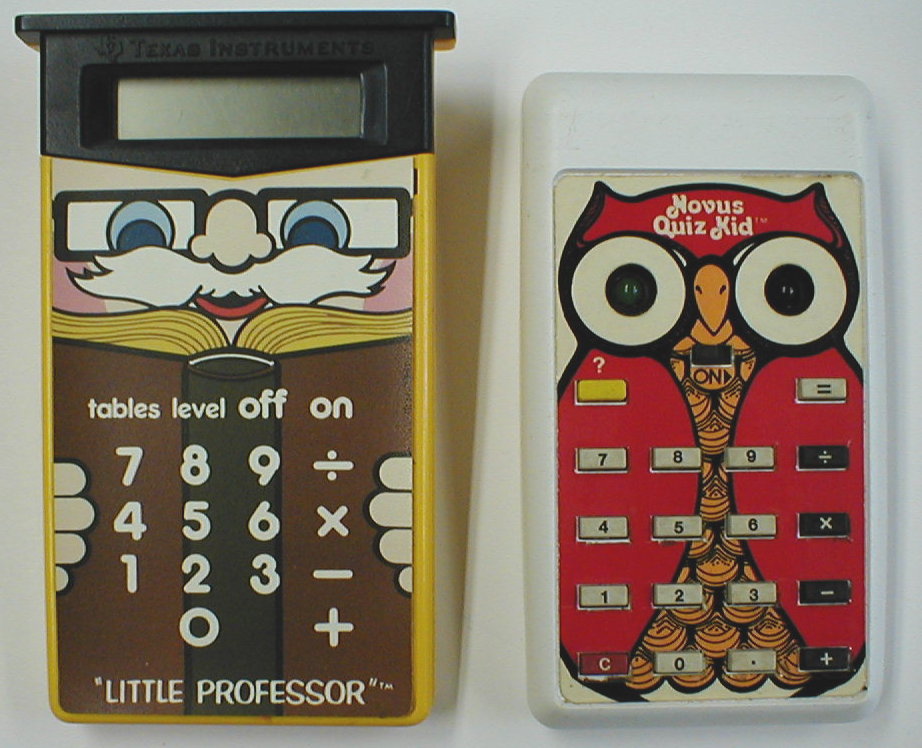

1.
TI Little Professor--LCD version: The classic moves into the 01980's.
2.
Novus Quiz Kid: With this game, you key in a full equation and press the ?
key. If the equation is correct, the left (green) eye lights up; if wrong,
the right (red) eye lights up.
3. TI Solar Little Professor: Into the
01990's now, with this model sold in Europe.

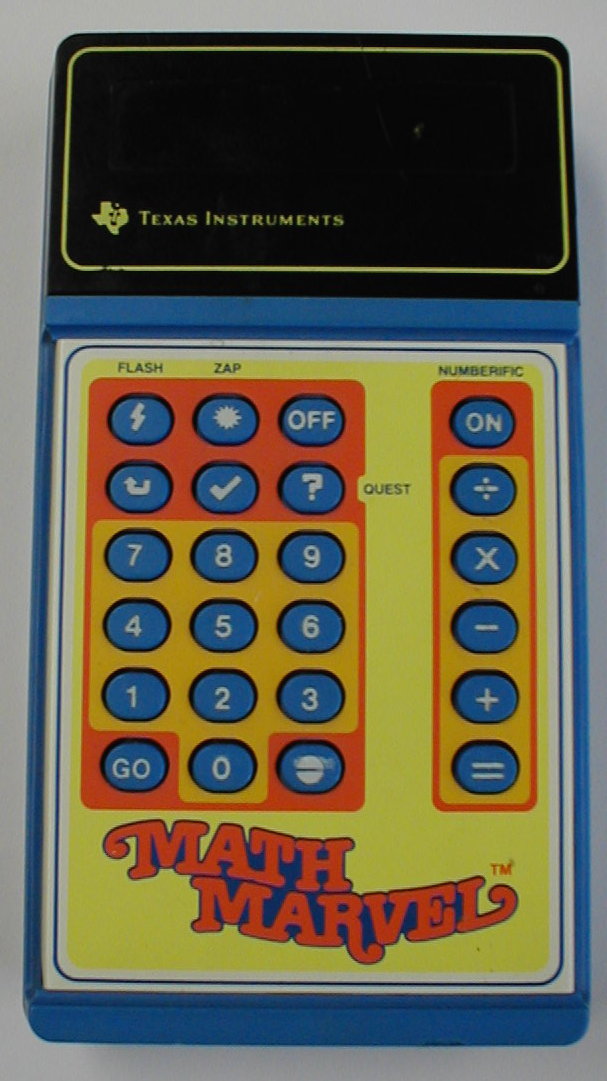
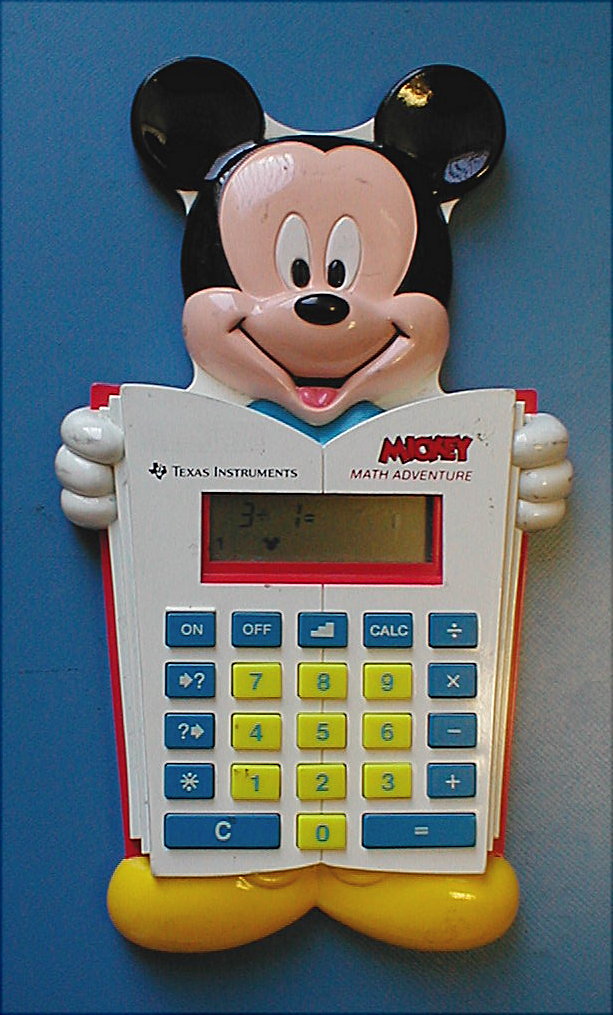
1. TI Math...To Go!: A 01980's update of the Little Professor, complete
with convenient handle. Can also be used as a four-function calculator.
2. TI Math Marvel: An earlier LED alternative to the Dataman and
Little Professor.
3. Mickey's Math Adventure: Operationally similar to
Math...to Go!.
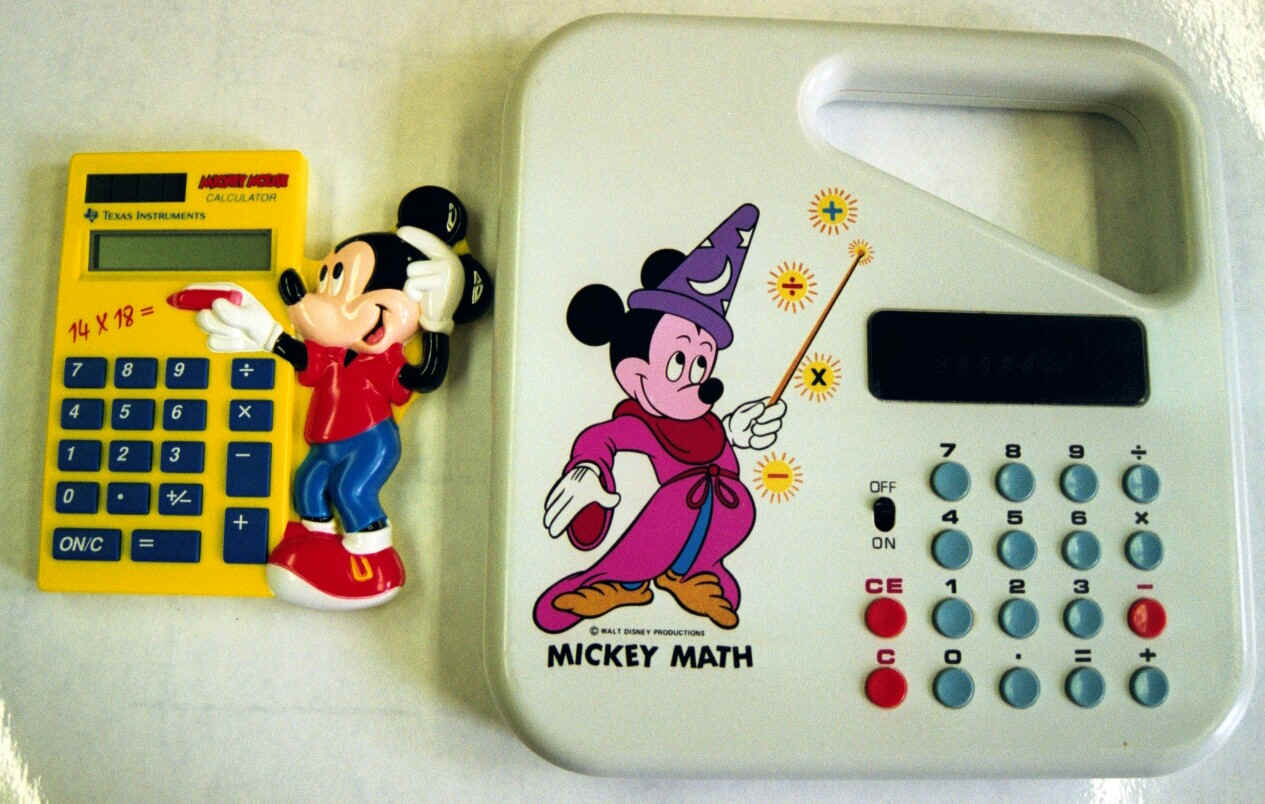
1. TI Mickey
Mouse: Basic four-function machine.
2. Mickey Math: Made by Omron
and distributed by Alco, this one only carries 6 digits in the blue-green LED
display.

Speaking of fictional characters, here's the TI ET calculator. I'll be the first one to admit that this loses something without the ET figurine that was packaged with this machine.
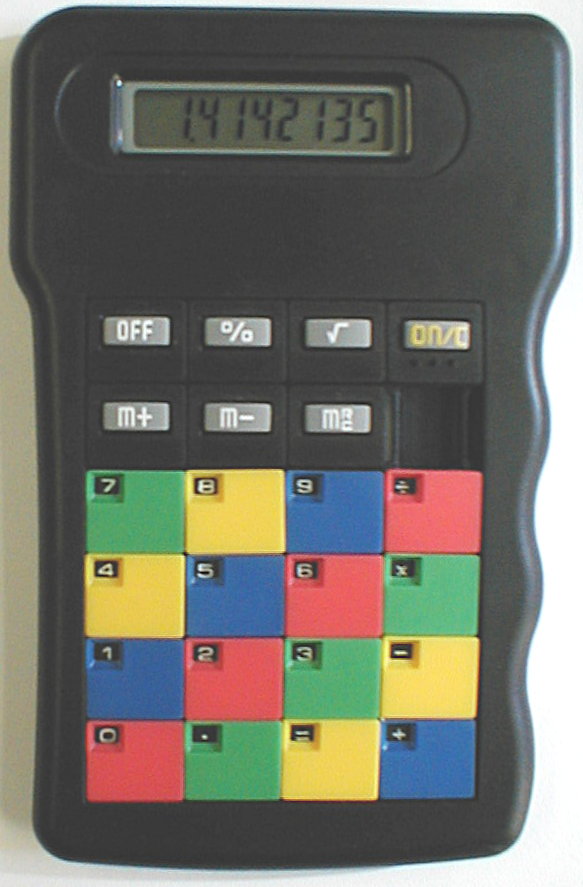
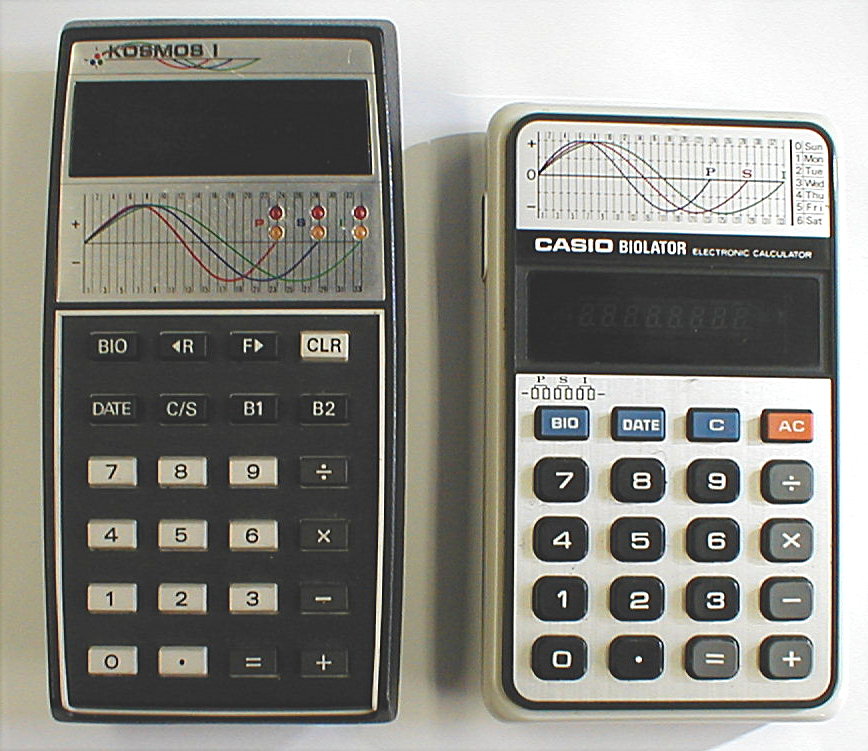
1. Limax Puzzle: A standard five-function calculator; what's special about this one is that the colored key covers slide around and can be repositioned. No effect on the calculations--the numbers stay where they were installed.
The pseudoscience of biorhythms had a brief flirtation with fame in the mid-01970's--just as the electronic calculator was coming into wide distribution. It's no shock, therefore, to see some specialized machines for computing these cycles. (The TI-58, 58C, and 59 included biorhythm charting programs on the Leisure Library Module.)
2. Kosmos 1
3.
Casio Biolator: This calculator, sadly, is obsolete--it worked with dates
only through December 31, 01999. Not Y2K compliant.
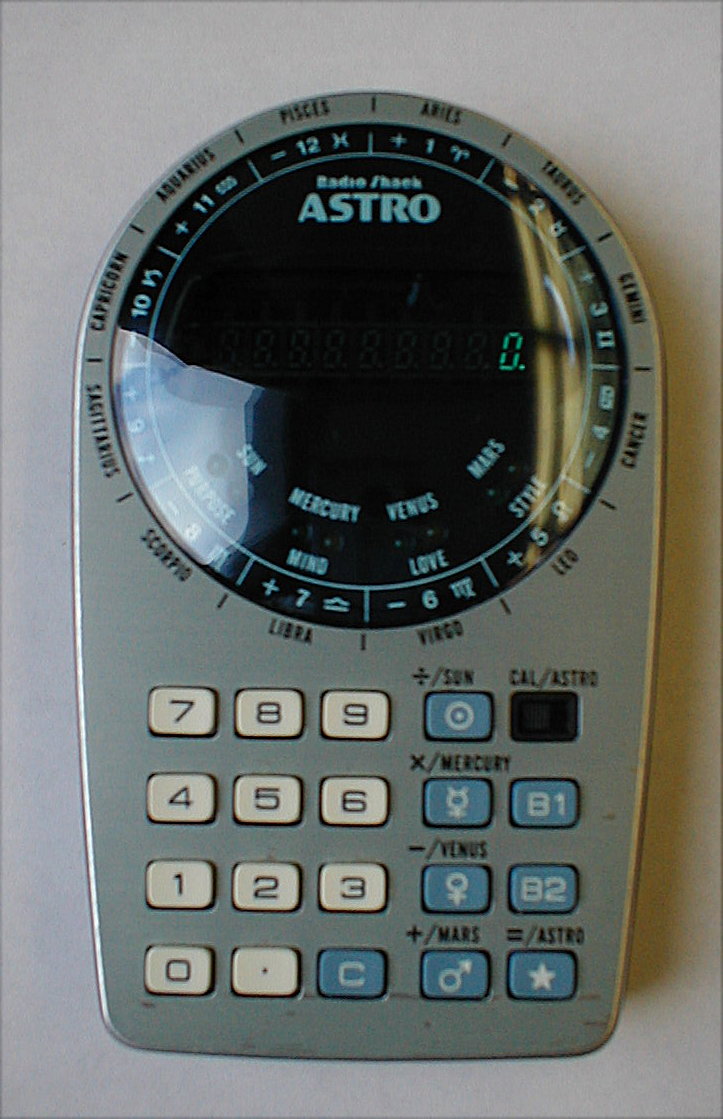
Radio Shack Astro: Speaking of pseudosciences, there's none bigger than astrology, and this calculator allows computation of horoscope "information".
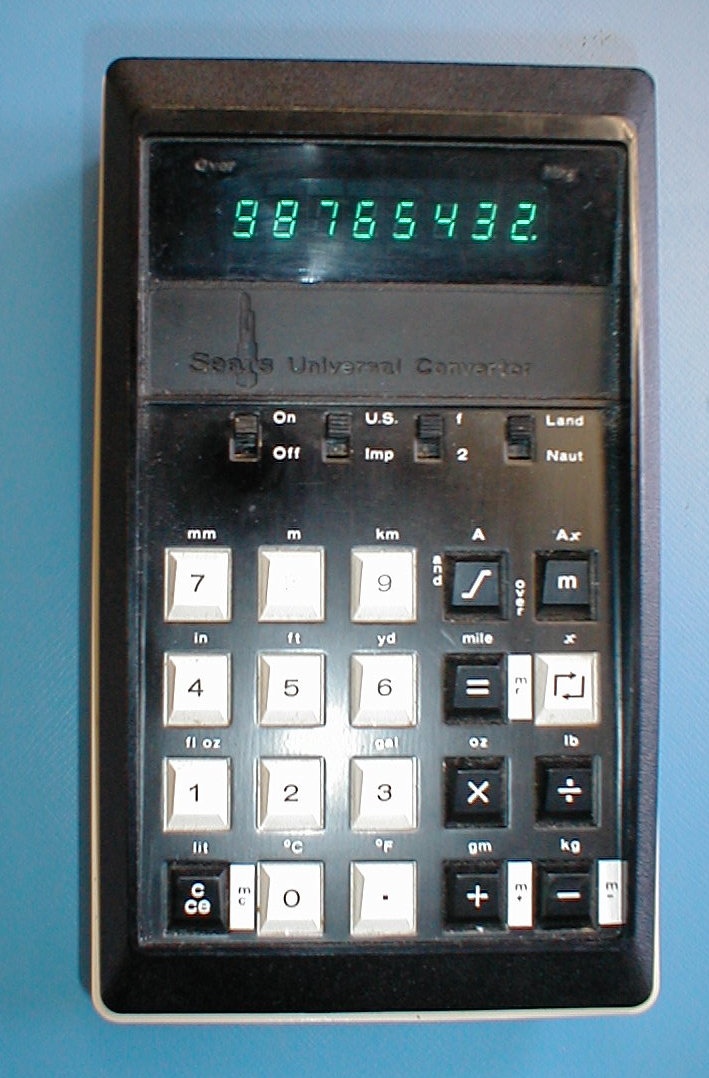

Another fortunate concidence for the fledgling personal calculator industry in the mid-01970's was the effort to convert the United States to the metric system. This led to the introduction of several calculators preprogrammed especially for unit conversions. (The TI-55 has several keys devoted to conversions, whicle the TI-58 and 59 can do conversions through a library module program.)
1. Sears Universal Converter
2. Novus
International Computer
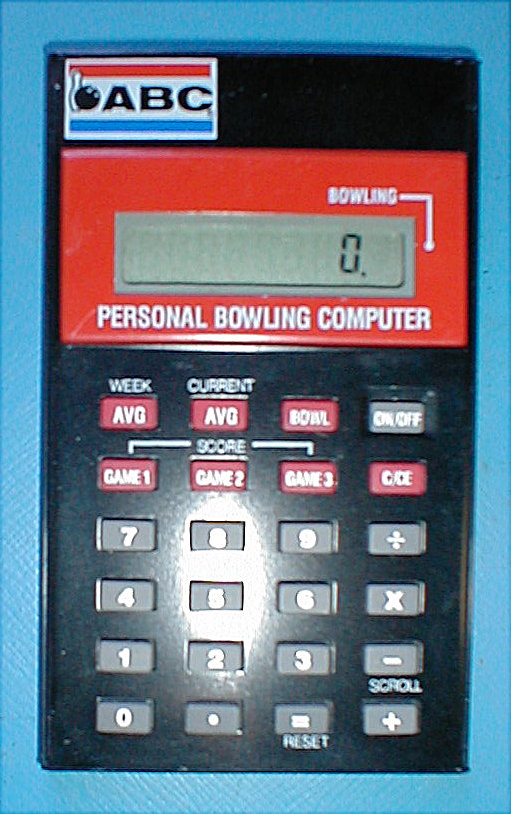
Personal Bowling Computer: In addition to functioning as a four-function calculator, this machine also manages bowling scores and computes averages. I put this one to work during the wedding reception of my friends Kristie and Steve Donohue.